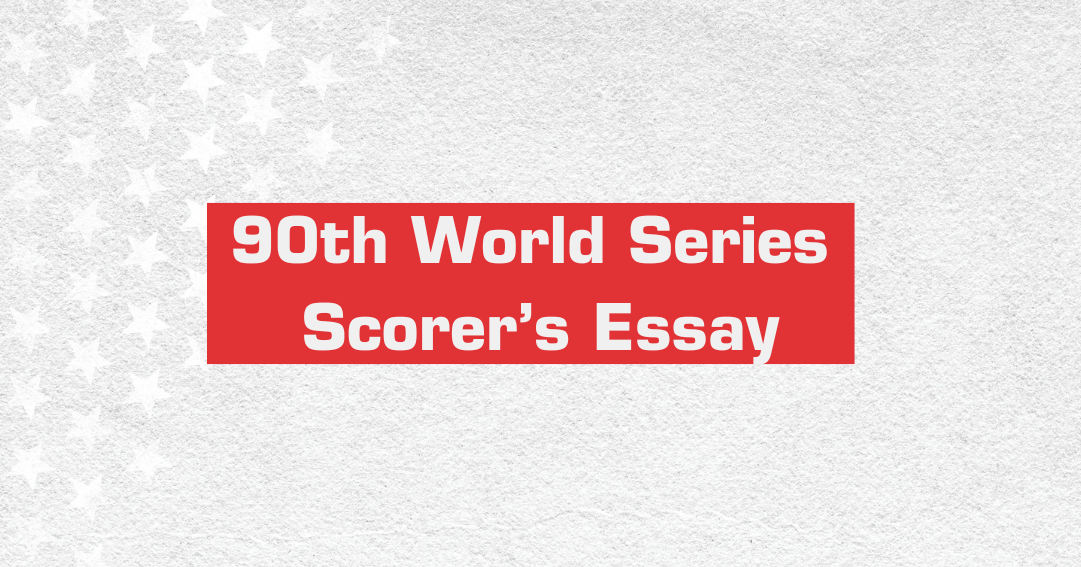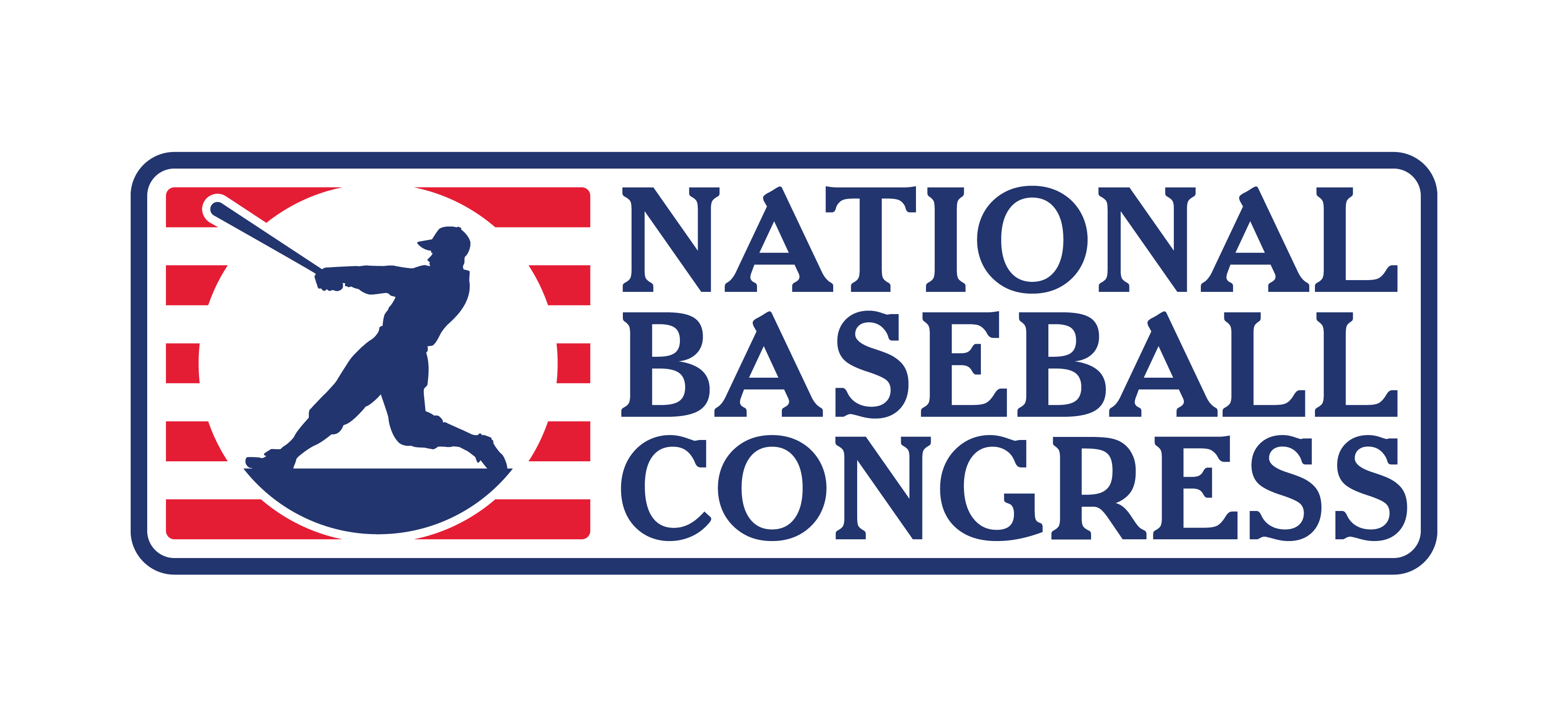2024 2nd Scorer’s Essay
⋅
Aug. 8-10, 2024
Errorless Games in the Modern Wood Era
The first scorer’s essay didn’t make a reference to errorless games in the 90th Annual NBC World Series. So, in
rectifying this omission (there were three clean fielding games), this writer decided to survey the errorless contests in the
MWE:

There have been three tournaments where five errorless games were recorded (2001, 2010, 2013), and three
times where a club was charged with nine errors in a game (2002, 2004, 2012). There were eight times where a game
saw 10 or more errors; the last one occurred in 2016. The 2022 series is the only one that did not have any error-less
games.
The club that has the most runs rules
This writer quipped (with a straight face) that the run rules are: “10 after five, 8 after seven, 1 after nine (he also
said “any amount after nine”)”, which got him some well-deserved razzing.
Run-rule development (from the 2022 scorer’s essay)
The first run rule was a 12-run lead after seven innings, invoked in a 13-0 Poplar Bluff (Mo.) win over New York
on 8/14/1935. There was also a 16-run lead after five innings, but the closest to that rule being called in was a 20-6
Gadsden (Ala.) win over Oceanside (Calif.) on 8/19 that ended by mutual agreement after six innings (perhaps an earliest
reference to a “mercy rule”).
A couple of games in the 1936 competition were also called by mutual agreement, including a 20-3 Indianapolis
rout of New Orleans 8/17 called after five innings.
- 1937: Run rule 8 after seven innings.
- 1951: Run rule 12 after five innings, 8 after seven.
- 1960: Run rule 10 after five, 6 after seven.
- 2002: Six-run rule dropped.
- 2010: Eight-run lead after seven innings added (out of 157 games that would have been called on the old
6-run rule, only once did the defeated team came back to win).
This writer is not sure that reinstating the 6-run lead after seven innings would help move the games along (only
three games would have impacted by that rule), and even more doubtful that there would be any buy-in.
Games in the 2024 NBCWS that would have been affected by the 6-run lead rule:
Derby 8, Boulder 3, 7/28: Would have ended after 8 complete
Santa Barbara 12, Haysville 6, 7/29: Would have ended in the SBF 8th
GPS 9, Blackfins 3, 7/29: would have ended after 7½
Wrestling with game times
Game times in the NBCWS has been a complicated puzzle with many moving parts.
In the six years this writer has data prior to the start of the MWE, average game times ranged between 2:02
(1998) to 2:14 (1997). The first four years of the MWE stayed close to those averages, but the 2005 edition saw a 5-
minute jump to 2:19. It receded from the 2006 high of 2:20 to 2:10 in 2014, but 2015 saw an 8-minute jump to 2:18.
The average time increased to a high of 2:34 in 2020, but then dipped to 2:22 in 2023. The 2024 tournament reached the
all-time high of 2:36, a 14-minute jump in average.
The number of quick games (defined as 1:30 or below) stayed equal to or above the number of long games
(defined as 2:45 and above) from 1994 until 2004. The number of super-quick contests (1:15 and below) were at least 7
(except for 3 in 1997) from 1994-1999 and a high of 4 from 2000-2002. With the exception of 3 in 2016, such games have
fluctuated between 0 (four times) and 2 (seven times) from 2003 on.
The 12 2:45-+ games is the most in the MWE; the previous high of 11 occurred in 2000 and 2009.

The other significant piece of the puzzle relates to matters connected to the 20/90 action clock. While this writer
believes there could be some time savings with consistent operation of the clock, he doesn’t believe that a lot of minutes
could be saved in the area.
With the action clock a part of the NCAA rulebook, the NBC regulations could be aligned more with the NCAA
ones, particularly when the clock expires (e.g., no more buzzer going off (or air horn) at appropriate/inappropriate times).
The mechanic of the plate umpire tapping his left wrist to denote a violation is good, although making that signal more
obvious to the press box would be useful.
An area where the two regulations could be harmonized:
NBC: The 90 second clock starts when the last defensive players crosses his respective foul line closest to
dugout. The 90 second clock stops when the pitcher begins his wind-up to the first batter of the inning.
NCAA: The [120]-second clock shall start when all defensive players have started to leave their positions after the
last out has been made and stops when the umpire calls “Play” for the first pitch of the first batter of the next half-inning.
Perhaps another area of harmonization could be:
(4) The clock stops when the pitcher begins his motion to come set from the stretch position, or begins his motion
home in the wind-up.
(
5) A ball results when the pitcher does not deliver the ball within the 20 or 90 seconds when he is responsible for
the delay.
And lastly, posting a laminated copy in the PA room for easy reference…

